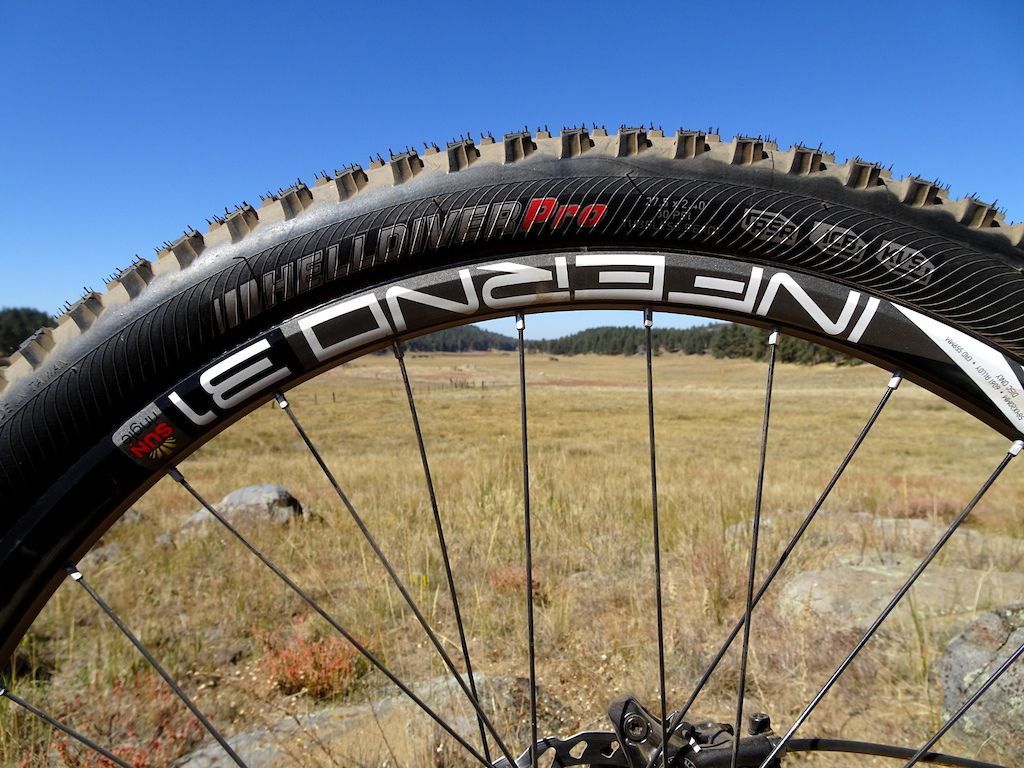Many sports cars feature low-profile tires, which improve handling and performance. These tires give you more grip on paved roads and, combined with large rims and brakes, they also help you stop faster. Low-profile tires are also really sleek looking. If you're a fan of big rims with less rubber, check out the top low-profile tires on the market.
Best Overall
Continental Extreme Contact All-Season Radial Tire
Check Latest Price
Summary
This ultra-high performance, all-season tires feature X-Sipe technology to improve braking, cornering, and acceleration in the rain, snow, and ice. The tires come with a 50,000-mile limited mileage warranty.
The SportPlus Technology provides precise handling and security on wet, slippery roads. They have a good tread life and are less noisy than some of their competitors.
They can wear out quickly if they are under or overinflated. They also don't perform particularly well in snowy conditions.
Best Value
Hankook Ventus S1 Noble2 Performance Radial Tire
Check Latest Price
Summary
These all-season tires are designed to handle well in both dry, wet, and light snow conditions. The sidewalls feature high-hardness bead fillers and casing plies that foster improved handling and steering response.
The Hankook tires are well made, have a good tread pattern, and are grippy. They are also moderately quiet, sharper, and more responsive than some competing brands.
The biggest problem with these tires is the tread wears down quickly. Also, they don't perform very well in the snow.
Honorable Mention
Michelin Pilot Sport A/S 3+ All Season Performance Radial Tire
Check Latest Price
Summary
These tires feature an Extreme Silica+ compound that helps the tires stay grippy when wet, and large rain grooves and 3-D sipes help prevent hydroplaning.
These tires stick to the road, even in the cold weather, and they are terrific in the rain. Overall ride quality and handling is excellent, and they go over bumps nicely.
Overall ride quality and handling is excellent, and they go over bumps nicely.
One of the biggest complaints about these tires is that they tend to be very noisy. They also may wear down rather quickly, which is common with many low-profile brands.
Our reviews are driven by a combination of hands-on testing, expert input, “wisdom of the crowd” assessments from actual buyers, and our own expertise. We always aim to offer genuine, accurate guides to help you find the best picks.
Learn more
 The rolling resistance of a tire usually determines its fuel efficiency. Low profile tires also don't deform as much as high profile tires and flex less as you drive. Tires that flex more absorb more energy.
The rolling resistance of a tire usually determines its fuel efficiency. Low profile tires also don't deform as much as high profile tires and flex less as you drive. Tires that flex more absorb more energy.Summer tires are built for speed and agility and offer top performance on dry roads. They have better responsiveness, braking, and cornering capabilities. This is largely attributed to their unique tread patterns and compounds which allow for improved precision on the road.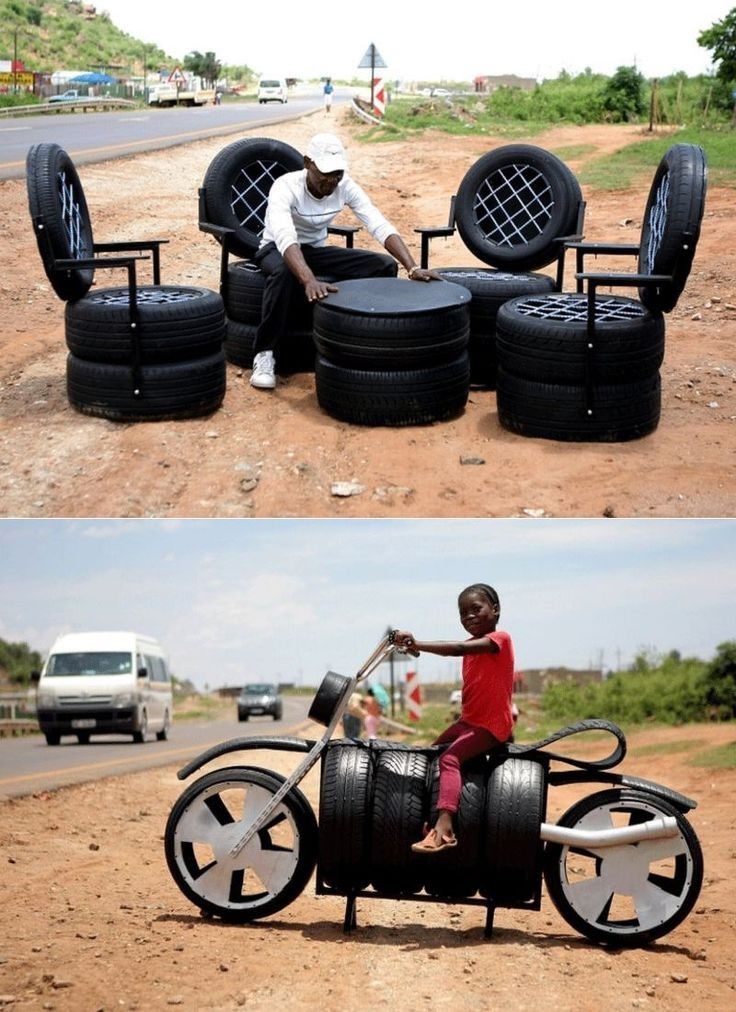 Some low profile summer tires have tread patterns with less grooves for maximum road grip. Their rubber compounds are more flexible for better traction and grip.
Some low profile summer tires have tread patterns with less grooves for maximum road grip. Their rubber compounds are more flexible for better traction and grip.
All-season low profile tires deliver grip and confident handling in all seasons. They provide year-round traction, thanks to their tread designs and compounds that remain flexible in all weather conditions. The tread patterns are usually symmetrical and the tires have grooves and sipes that siphon away water. All-season tires don't produce a lot of noise and make for a comfortable driving experience. They provide good performance in both wet and dry conditions and good traction in snow.
It's important to get winter tires for winter. Winter tires can be studded or non-studded and have deep grooves and treads that expel slush from the contact patches. These tires have tread patterns with larger gaps which increase traction on snow and ice. Low profile winter tires can be used in cold and snowy areas (with temperatures 7°C or below). They are made with soft rubber compounds that ensure they stick to the road even when temperatures go up. However, it's worth noting that these tires produce noise at higher speeds because of their complex tread patterns.
They are made with soft rubber compounds that ensure they stick to the road even when temperatures go up. However, it's worth noting that these tires produce noise at higher speeds because of their complex tread patterns.
These tires also go by the name grand touring tires and deliver responsive handling and reliable all-season traction. They usually have a higher speed rating than all-season tires and mostly feature an asymmetrical tread pattern. Low profile touring tires are designed for comfort and make road bumps and road imperfections less noticeable. Their treads have increased surface contact with the road. The tires are usually sold as all-season tires and offer a long tread life, good handling, and a comfortable, quiet ride.
Michelin is a French tire manufacturer based in Clermont-Ferrand, France. It’s one of the largest tire manufacturers in the world. The company was founded by Aristide Barbier and Édouard Daubrée and initially made farm equipment and rubber balls. It created the first detachable bicycle tire in 1891. The company has created many awesome inventions over the years, like the radial earthmover tire, Michelin XDR, and the Michelin CrossClimate Tire. If you’re in the market for a low profile tire, the Michelin Pilot Sport PS2 Radial Tire is a great choice.
It created the first detachable bicycle tire in 1891. The company has created many awesome inventions over the years, like the radial earthmover tire, Michelin XDR, and the Michelin CrossClimate Tire. If you’re in the market for a low profile tire, the Michelin Pilot Sport PS2 Radial Tire is a great choice.
Goodyear’s full name is Goodyear Tire & Rubber Company. Frank Seiberling, an American innovator, started the company in 1898. It is currently based in Akron, Ohio. Goodyear makes tires for airplanes, cars, SUVs, racecars, trucks, motorcycles, earth-mover machinery, and farm equipment. If you love Goodyear tires, get the Goodyear Eagle RS-A Radial Tire for your vehicle.
Cooper Tire & Rubber Company specializes in the design and manufacture of automobile and truck tires. Its subsidiary, the UK-based Avon Tyres, develops and manufactures tires for trucks, motorcycles, and race cars. Cooper was established by John F. Schaefer and Claude E. Hart back in 1914 and was known as the M and M Manufacturing Company. It is currently headquartered in Findlay, Ohio. One of its bestselling low profile tires is the Cooper P275/60R15 107T Cobra G/T All-Season Tire.
Schaefer and Claude E. Hart back in 1914 and was known as the M and M Manufacturing Company. It is currently headquartered in Findlay, Ohio. One of its bestselling low profile tires is the Cooper P275/60R15 107T Cobra G/T All-Season Tire.
As we mentioned earlier, low profile tires are split into four different categories. Each tire type has a distinct tread pattern and performs differently. For example, all season tires perform well in different conditions, but cannot handle extreme weather conditions.
Each tire type has a distinct tread pattern and performs differently. For example, all season tires perform well in different conditions, but cannot handle extreme weather conditions.
Summer tires are ideal for warm weather and have large tread blocks for maximum contact with the road. Winter tires are designed for use on snow and ice. They remain flexible in cold weather and grip the road better. Touring tires are designed for comfort. Many drivers prefer them because they don't produce any noise and make for smooth driving.
The next important feature you should look at is the size of your low profile tires. If you get the wrong size, they won't fit your car. Tire dimensions are usually indicated as 255/50R20 104V. The first three digits, 255, indicate the tire’s width in millimeters. The number 50 indicates the height of a tire's sidewall. The “R” means that the tire is a radial tire and its layers run radially across. The number 20 refers to the wheel diameter, which is measured in inches.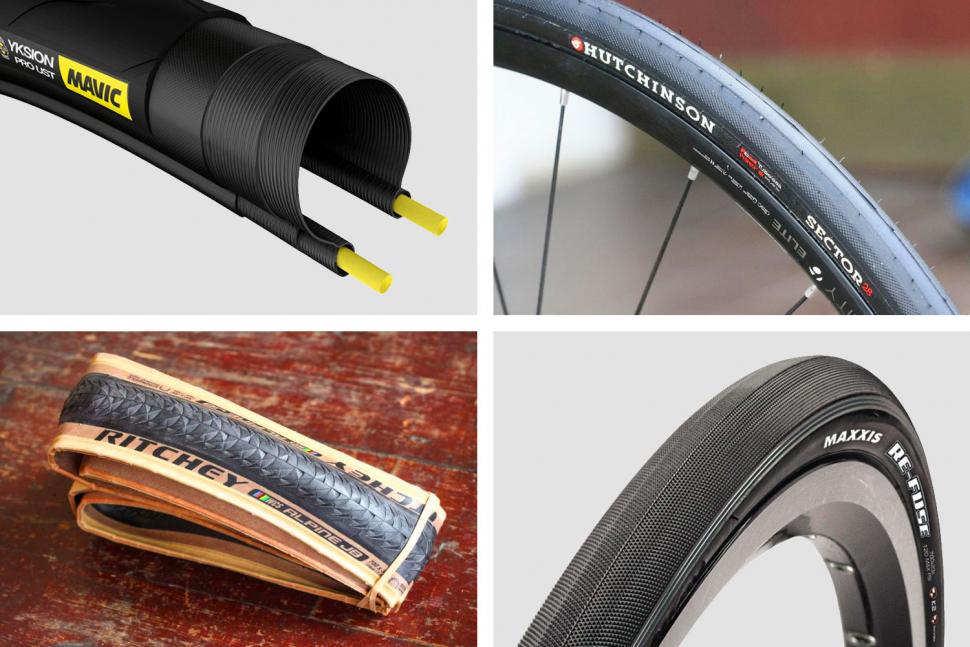 The number 104 indicates the load rating or the maximum weight the tire can carry, and “V” refers to the tire's speed rating in optimal conditions. When it comes to speed rating, the later the letter falls in the English alphabet, the higher the speed rating.
The number 104 indicates the load rating or the maximum weight the tire can carry, and “V” refers to the tire's speed rating in optimal conditions. When it comes to speed rating, the later the letter falls in the English alphabet, the higher the speed rating.
Each low profile tire has a life expectancy (mileage). However, it's worth mentioning that the mileage the manufacturer gives is merely an estimate. Your driving habits, weather conditions, and other factors will determine how long your tires last. The rubber compound used to make a tire also dictates its lifespan.
For instance, some tires have softer compounds that allow them to grip the road tightly. However, they have a rapid tread wear rate because some of the rubber is left on the road after every drive. Tires with a higher mileage are made with harder compounds to last longer. Low profile tires made with silica improves tread durability.
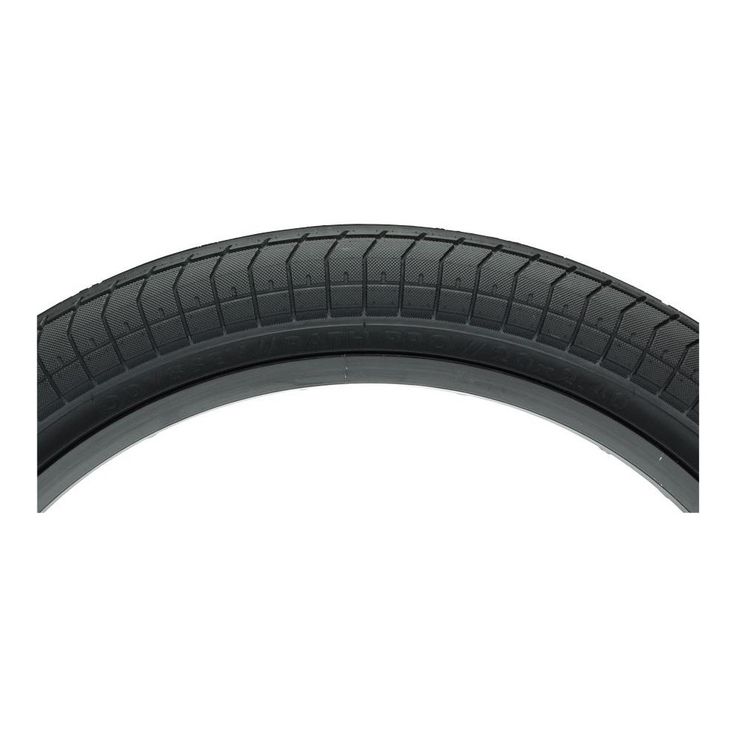 This refers to a tire’s grip capacity on wet surfaces. The best low profile tires have the highest grade: AA. Most of the tires on the market have an A grade and a few have a B grade. Get tires with an A or AA grade and you’ll never have to worry about your car sliding on wet roads.
This refers to a tire’s grip capacity on wet surfaces. The best low profile tires have the highest grade: AA. Most of the tires on the market have an A grade and a few have a B grade. Get tires with an A or AA grade and you’ll never have to worry about your car sliding on wet roads.This high-performance all-season radial tire will satisfy your year-round driving needs. It blends dry and wet traction and features traction grooves and X-Sipe Technology. The tire also features Continental's SportPlus Technology which allows for enhanced handling.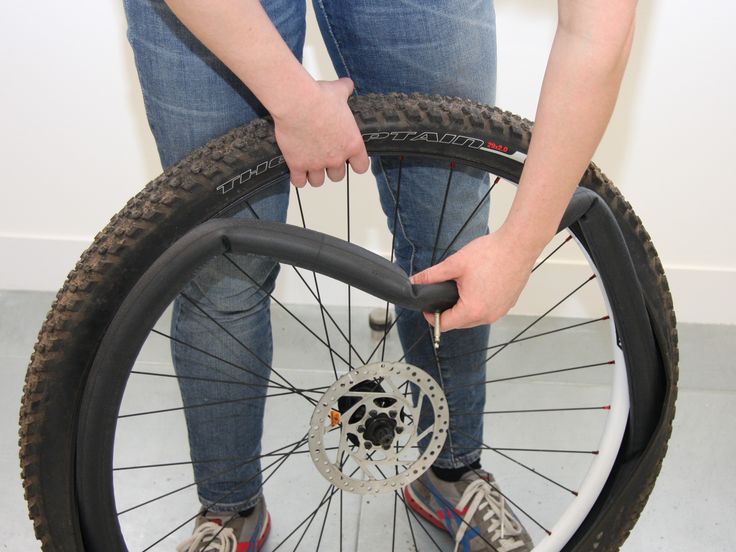 QuickView Indicators allow you to easily see how the tire performs in snowy conditions. They also alert you when you need to check your vehicle's alignment.
QuickView Indicators allow you to easily see how the tire performs in snowy conditions. They also alert you when you need to check your vehicle's alignment.
The DWS06 offers superior braking and cornering performance. It is a very responsive tire and you won't have a hard time driving in extreme conditions. The sport sidewall insert enhances the tire's steering response in different road conditions. The two-ply sidewall gives the tire added strength and cornering stability.
The Extreme Contact DWS06 is available in different sizes with Y and W speed ratings. The manufacturer also gives a 50,000 mile limited mileage warranty. However, this is not a run-flat tire and it’s also quite loud. It also doesn't perform well in snowy conditions.
This all-season tire is perfect for all types of sedans and sports coupes. It provides good traction and great cornering performance on wet, dry, and even snowy roads. A silica tread compound increases its traction and rolling resistance for better fuel efficiency.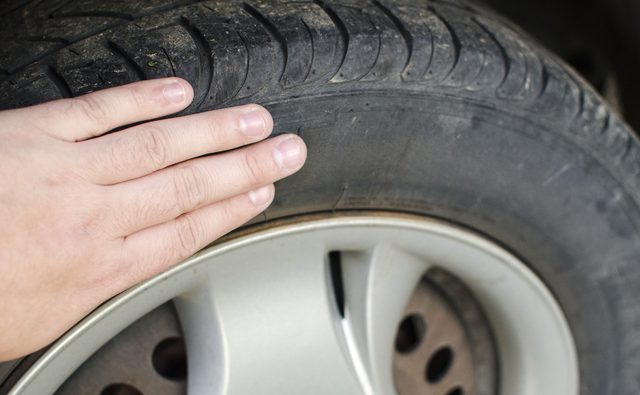 The tread design and notched shoulders offer impressive cornering grip and dry traction.
The tread design and notched shoulders offer impressive cornering grip and dry traction.
Hankook's innovative Aqua Hydro Block Technology and four circumferential grooves improve braking performance and wet traction. The two features also minimize the chances of hydroplaning by moving water away from under the tire. Two steel belts inside the tire are reinforced with nylon for increased strength and longevity at higher speeds.
Hankook offers a 50,000 mile tread warranty for this tire. It’s also built using 3D Vibration Analysis Technology, which promotes secure braking performance and even wear. However, the tread life could be better as it wears down very quickly. It also doesn't perform very well in snowy conditions.
This tire is designed for coupes, sports cars, and sedans. It is ideal for car owners who seek optimum performance all year long. It offers good grip on wet surfaces, brilliant steering on dry roads, and excellent traction across seasons. The low profile tire is made using Michelin’s Hello+ tread compound which offers better traction in snowy conditions.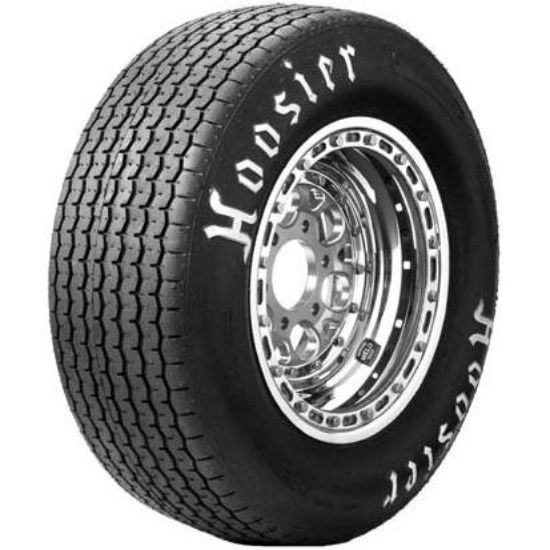
Circumferential grooves on the tire quickly remove accumulated water, slush, and snow. The grooves also reduce the risk of hydroplaning and enhance traction as your car moves through mud puddles. You’ll be able to go on that off-road trip you’ve been planning for years.
The Michelin Pilot Sport A/S 3+ All Season Tire utilizes Michelin’s Variable Contact Patch 3.0 Technology. It evenly distributes all encountered pressure across its surface. However, it is not a comfortable tire and produces a significant amount of noise.
The asymmetrical tread pattern on this tire is made from a versatile rubber compound. The silica formula enables you to use this tire during hot and wet summers or cold and light snowy winters. The outer blocks are large to give extra support to the sidewall. Through the center of the tire are solid circumferential ribs for constant contact with the road. Internally, there are twin steel belts that wrap around the tire to give it stability and strength.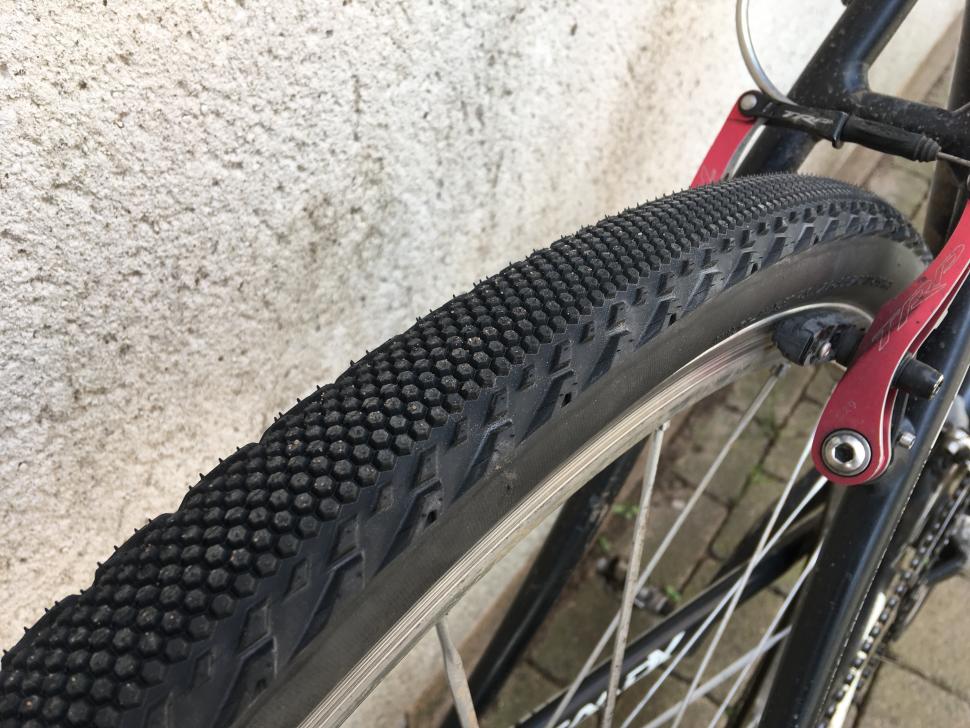
What makes this tire stand out is the extra sipes it has throughout the entire tread pattern. This gives you extra grip in slippery driving conditions. The increased traction will give you faster acceleration and braking.
The downside of these tires is that they can be noisy. Pirelli knows this, yet only limited sizes come with its noise-canceling system. Also, some users received old or defective tires.
This all-season tire provides you with high performance functionality throughout the year. There are four wide circumferential grooves for channeling water away from the tire’s contact patch. Then each side has a different tread pattern that wraps around the tire’s shoulder. Both patterns have an open tread pattern for expelling water away. The tread’s rubber compound has an optimized silica to provide improved performance during braking, accelerating, and handling.
You’ll like driving on this tire because it gives you improved steering control, handling, and wet road traction. Built into the internal construction of the tire are noise prevention bars to reduce the tire noise and give you a quiet ride. They also hold up quite well when braking hard. This gives you a lot of durability whether you're a conservative or aggressive driver.
Built into the internal construction of the tire are noise prevention bars to reduce the tire noise and give you a quiet ride. They also hold up quite well when braking hard. This gives you a lot of durability whether you're a conservative or aggressive driver.
Unfortunately, this tire tends to struggle with traction on snowy roads. It also lacks stability when cornering.
This all-season tire has an extra wide stance to give you a larger contact patch with the road. It has four wide circumferential grooves for wet road traction. These feed to wide siping on both of the outer tread blocks for maximum water channeling. The unique tread pattern across the face of the tire creates a smooth ride.
What makes this tire stand out is the state-of-the-art technology used to build it. This will give you improved traction on dry, wet, and lightly snowy roads. You’ll have traction at all speeds while also having improved tread life.
Unfortunately, the tread can separate from the body of the tire. This results in immediate air loss and requires replacement. You may also find these tires are susceptible to puncture. This makes them not as durable, despite the long tread life.
This results in immediate air loss and requires replacement. You may also find these tires are susceptible to puncture. This makes them not as durable, despite the long tread life.
This high performance summer tire features a micro silica compound. This helps to evenly distribute the silica throughout the tire construction. The tire has a more effective contact patch as a result. It has a directional tread pattern with a solid center rib and a 3D dimple pattern. The internal structure is computer simulated to ensure even construction. This guarantees balanced wear throughout the tread pattern. This is supported by the reinforcement of two wide steel belts, a two-ply polyester casing, and two full layer nylon cap plies.
What makes this tire stand out is lateral grooves that are at angles in the tread blocks. They reduce wear and increase the durability of the tire. The 3D dimples are also unique in that they help the tire to dissipate heat better, which helps the tire perform better and last longer.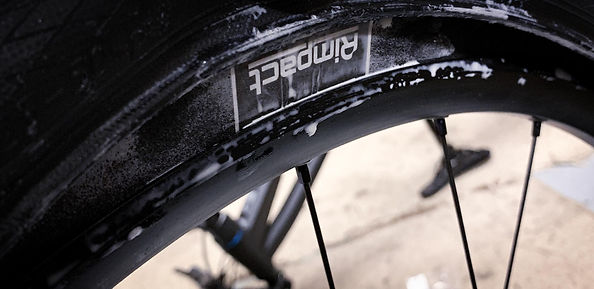
Unfortunately, this tire is loud. It only gets louder as the tire tread wears. The tire starts out sticky and with plenty of traction, but that wears away with use too.
This all-season tire is meant for use on luxury cars and crossovers. The rubber compound features a high amount of silica. The tread features an asymmetrical pattern that uses Bridgestone’s Long Link Carbon Black technology. It also has Resonance Noise Attenuated (RENOA) silencing grooves to tone down acoustic tones. The tread pattern features continuous center and shoulder ribs for greater straight line stability. These are paired with circumferential grooves to channel water away.
What makes this tire stand out is its long tread life and low rolling resistance. Both of these will save you money. The long tread life reduces how often you’ll need to replace your tires, while the low rolling resistance will improve your fuel economy.
Unfortunately, this tire loses most of its traction abilities when hard-braking. This can result in a dangerous driving situation. Despite all of the built-in noise-canceling technology, these tires are still quite noisy. This is especially true when you drive at faster speeds.
This can result in a dangerous driving situation. Despite all of the built-in noise-canceling technology, these tires are still quite noisy. This is especially true when you drive at faster speeds.
The Cooper Zeon tire is designed to deliver impressive performance and handling while also being durable enough for driving on year-round. They handle well on dry, wet, and even lightly snowy roads. This is partially thanks to the internal construction of the tire, which features a two-ply polyester casing and twin steel belts that are spirally wrapped in nylon. It also has a very stiff bead filler that holds the tire steady during quick maneuvers.
What makes this tire stand out is the unique silica compound that provides maximum grip on both wet and dry surfaces. It’s molded into an asymmetrical pattern to give you a strong grip while cornering and dampen the sound you’d get with other tires. There are four deep circumferential grooves and wide lateral notches for powerful water channeling.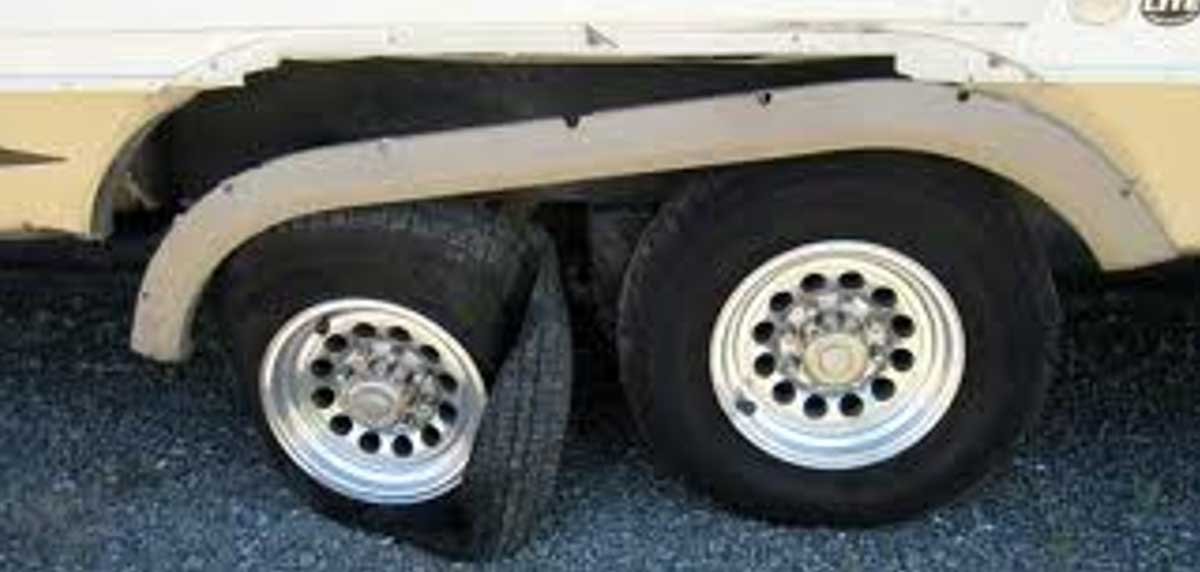 The pattern is then finished with 3D Micro Gauge sipes for grip in light snow.
The pattern is then finished with 3D Micro Gauge sipes for grip in light snow.
The downside of these tires is that they don’t grip as well in snow as they do on wet or dry roads. You’ll want to be more careful when driving in these conditions. You may also find the tire tread wears quickly when driving in colder temperatures.
This dependable tire is designed for use on SUVs, performance trucks, coupes, and sports cars. You’ll have predictable handling and year-round performance through wet, dry, and light snowy road conditions. The construction of the tire features twin steel belts that have nylon reinforcement.
What makes this tire stand out is the aggressive tread pattern. The tread block rows are separated by four deep circumferential grooves. Then there are lateral grooves separating the treads. These are lined by solid shoulder blocks that wrap around the sidewall to give the tire more stability.
The biggest problem with these tires is the lack of consistency in the quality.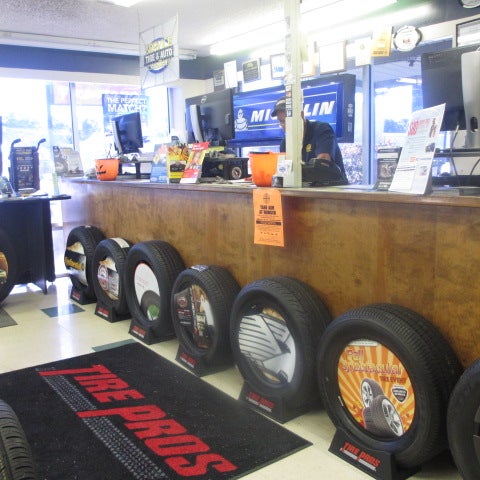 The lack of quality control can result in tires with flat spots, impossible to balance tires, and others with tread that separates from the body of the tire. They also struggle to provide dependable traction on wet roads.
The lack of quality control can result in tires with flat spots, impossible to balance tires, and others with tread that separates from the body of the tire. They also struggle to provide dependable traction on wet roads.
A: Low-profile tires tend to have less cushioning than standard tires due to the extra height in the larger sidewalls. You are more likely to feel the bumps on the road than you are with regular tires.
You are more likely to feel the bumps on the road than you are with regular tires.
A: Low-profile tires can be used on a variety of cars, including models by VW, Honda, Audi, and Lexus as well as luxury brands. But unless your car comes with low-profile tires from the factory, you may need to upgrade other parts of your vehicle to accommodate them. This includes the suspension, rims, and brakes.
A: Some brands offer this technology. When you get a flat tire, run-flat technology allows you to drive as far as 50 miles even if the tire completely deflates. Since low-profiles have less air than other types of tires, it's easy to incorporate this type of technology into them.
Our pick for the best low-profile tires is the Continental Extreme Contact All-Season Radial Tire. They perform well in a variety of conditions, aren't as loud as some competing brands, and come with a 50,000-mile warranty.
They perform well in a variety of conditions, aren't as loud as some competing brands, and come with a 50,000-mile warranty.
Tires may not be the most glamorous part of a car, but they have more impact on driving feel than nearly any other component. They’re the only parts of your ride that actually touch the ground, after all, and their ability to grip the road, disperse moisture, and hold up to countless miles of daily driving are central to on-road dynamics. No, they’re not as flashy as body kits or as punchy as turbochargers, but they’re one of the best vehicular investments you can make.
Low-profile tires are especially popular for serious drivers who love to modify their cars. Because larger wheels are a common upgrade, skinny tires are often necessary to make them fit in the wheel well. But these low-profile tires also give your ride a unique look and a sportier feel. These products generally have all the features of regular tires, only in smaller sizes.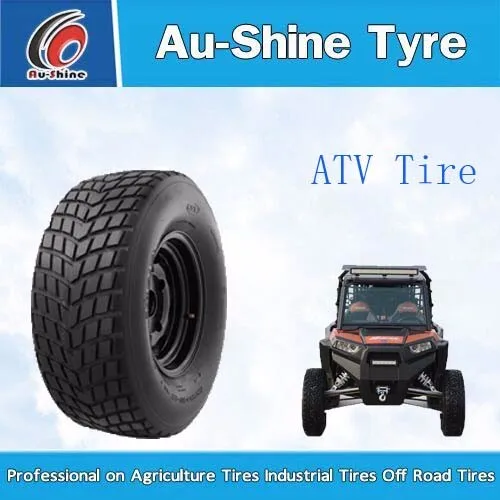
As with regular tires, you can choose low-profile variants suited to particular driving styles. Sticky performance tires, long-lasting economy rubbers, all-season models, and even skinny snow tires are all out there at a variety of price points. How did we choose our favorites? Read on to learn more about low-profile tires.
Drivers love low-profile tires for their visual appeal, but the stiffer sidewalls and wide contact patches grant impressive performance as well. But there are drawbacks. Low-profile tires can produce more noise than standard variants. They may also ride a bit rougher, and they can be more susceptible to wheel damage.
New tires can greatly affect a vehicle’s handling, fuel consumption, weather performance, ride quality, speedometer accuracy, and noise level. Depending on the style you choose, however, some of these changes may be positive, while others can be negative.
Low-profile tires are generally sold in one of four categories, each with its own distinct tread pattern and performance goals.
All-season: These ubiquitous jack-of-all-trades tires are designed to deliver grip and confident handling regardless of the season. All-seasons deliver comfortable city and highway experiences with relatively low noise. Tread patterns are often symmetrical in this category, with grooves and sipes to siphon away water.
Summer: These tires are optimal for performance vehicles in warmer climates and feature less prominent treads than other types. This gives them wider contact patches with the road for optimum grip, but there is still enough tread to inspire confidence in both wet and dry weather. The rubber compounds in performance tires are soft and grippy for better high-speed handling.
Winter: When the snow and ice hit, you’re going to want a set of winter tires. These tires come in studded and non-studded varieties—with deep treads and grooves to expel slush away from the tires’ contact patches.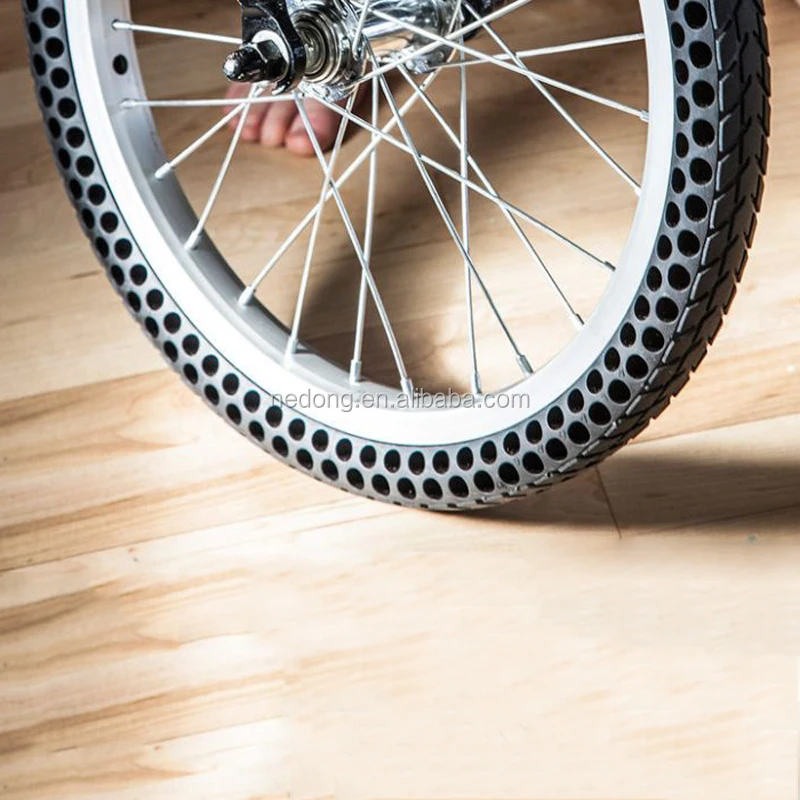 Winter tires also feature soft rubber compounds to stick to the road even as the temperature plummets. Keep in mind that the more complex tread patterns on winter tires will generate additional noise at higher speeds.
Winter tires also feature soft rubber compounds to stick to the road even as the temperature plummets. Keep in mind that the more complex tread patterns on winter tires will generate additional noise at higher speeds.
Touring: Geared toward comfort, touring tires are designed to bestow high levels of luxury to the occupants, meaning bumps and imperfections in the road are less noticeable. They still offer solid grip and performance though, and are usually sold as all-seasons. Speed ratings for touring tires are high as well.
The size of your tires is paramount — they have to fit on your wheels, after all. Tire dimensions are dictated by a figure that looks something like this: 285/35R22 106W. Let’s explain what each part means.
285: The width of the tire in millimeters at its broadest part.
35: The height of the tire’s sidewall, shown as a percentage of the tire’s width. Low-profile tires almost always have an aspect ratio below 50.
Low-profile tires almost always have an aspect ratio below 50.
R: Indicates the product is a radial, which means the layers run radially across the tire.
22: The wheel diameter, measured in inches.
106: The load rating, load index, or the maximum weight each tire is rated to carry.
W: The speed rating of the tire in optimal conditions. The later in the alphabet the letter falls, the higher the speed rating. A tire marked ‘W’ is rated suitable for speeds up to 168 mph.
Tires come with their own life (mileage) expectancy. These mileage estimates are merely averages because weather severity, driving habits, and other factors all play a part in how long a tire will last. The lifespan of a tire is dictated in large part by the rubber compound used to make it. Some are softer, allowing them to grip the road more tightly for performance-focused vehicles.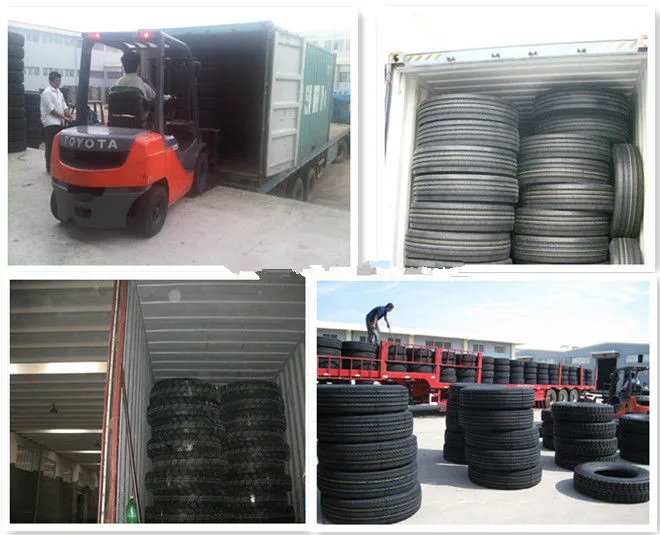 The tradeoff is higher tread wear, as more of the tire is left on the road after each mile. High-mileage tires are harder, by contrast, and will last considerably longer. Keep an eye out for tires that include silica compounds, as they improve tread durability.
The tradeoff is higher tread wear, as more of the tire is left on the road after each mile. High-mileage tires are harder, by contrast, and will last considerably longer. Keep an eye out for tires that include silica compounds, as they improve tread durability.
The majority of consumer-grade tires are filled with good old air, but some are piped full of pure nitrogen from the factory. Why? Pure nitrogen is less likely to seep through the tire rubber than oxygen, the benefit being more pressure stability in the long term. They’re also less susceptible to pressure change when the temperature fluctuates. Tires filled with nitrogen are denoted by green caps on the valve stems, but don’t worry: you can still pump in regular air if you get low.
Tire shine: Trinova No-Wipe Spray
Get that deep-black look and clean gleam of showroom tires with a quality tire shine product. We like the Trinova no-wipe spray, which quickly clears away grit and dirt, and provides a long-lasting shine.
Tire pressure gauge: AstroAI Digital Pressure Gauge
Maintaining proper tire pressure is one key to safe and long-lasting tires, so you should always have a quality tire pressure gauge on hand. We love this simple and versatile AstroAI model that features a clear digital display and works for cars, trucks, and bicycles.
Tire-patch kit: Boulder Tools Heavy-Duty Tire Repair Kit
When help is too far away for a tow, or if you simply want to repair a tire at home, it’s great to have a tire-patch kit handy. The Boulder Tools heavy-duty kit has all the tools and patches you need to fix up car, truck, and trailer tires.
"The wheels that drive your car will wear more than the unpowered wheels, but side-to-side, the tires should wear relatively evenly. If you notice uneven tread across the axles, inspect your wheel bearings, suspension components, and tie rods for issues. "
STAFF
BestReviews
Generally speaking, low-profile tires are slightly more expensive than regular ones.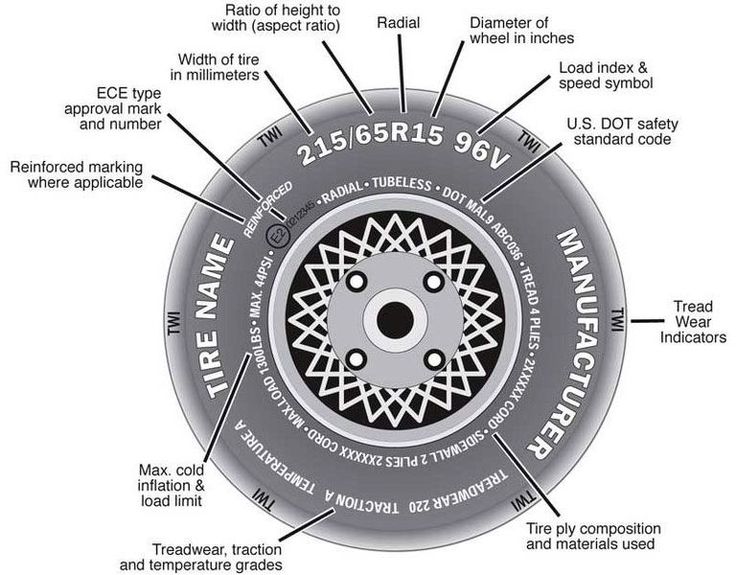 While standard-profile rubber tire prices range from $50 to $90, low-profile versions will cost between $65 and $200. Keep in mind that run-flat tires and those filled with nitrogen may add another charge.
While standard-profile rubber tire prices range from $50 to $90, low-profile versions will cost between $65 and $200. Keep in mind that run-flat tires and those filled with nitrogen may add another charge.
At $65 or so, expect to find relatively basic radials that perform decently in most non-snowy weather conditions. You can find tires for coupes, sedans, and crossovers at this price point. However, they may be louder and ride rougher than more expensive alternatives.
Mid-rangeIf you spend $100 per tire, you’re budgeting for higher performance capabilities in tandem with all-weather grit. These models will also be quieter, with more advanced tread compounds for better tread life. Larger tires for trucks and SUVs are also commonly found here.
ExpensiveAt the top of the range, you’re likely spending $150 or more on either a high-performance product or a smooth, low-noise luxury one..jpg) These have special rubber compounds, unique features, and painstakingly designed tread patterns to maximize handling and comfort.
These have special rubber compounds, unique features, and painstakingly designed tread patterns to maximize handling and comfort.
Did you know?
Race cars often run on what are called “slicks.” These are super sticky tires with no tread at all. This design gives the tires the biggest contact patch with the ground for maximum grip. Race cars don’t drive on rough roads in harsh weather though, so this layout would spell disaster for commuter vehicles.
STAFF
BestReviews
Buy a backup. Most cars come with a spare tire from the factory, but drivers often forget to order an extra when upgrading their wheels and tires. Consider purchasing an extra wheel and low-profile tire for an easy switch-out in case of a flat.
Watch your wear. Keep an eye on how your tires wear over time, paying close attention to your tread depth. The minimum legal tread depth is 1/16”, which you can measure by sticking a penny in the tread.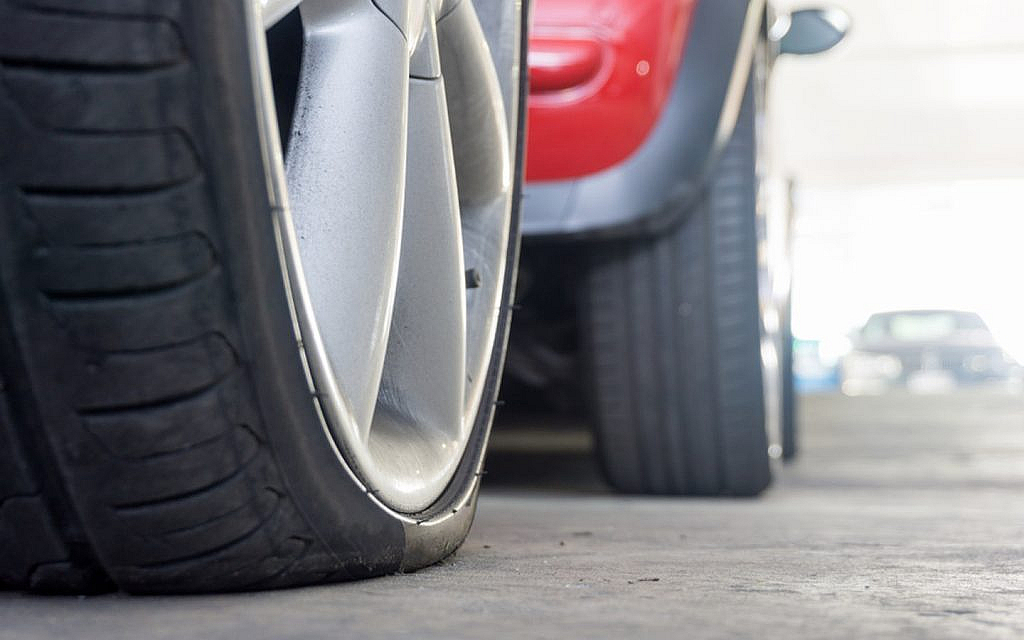 If the top of Lincoln’s head is visible, you need a replacement.
If the top of Lincoln’s head is visible, you need a replacement.
Mind your psi. Proper tire pressure is vital to maintain safe performance. Low pressure can cause excessive tire wear, unsafe braking, poor gas mileage, and even blowouts, so keep a tire gauge in your vehicle at all times. You can refill your tires at nearly any gas station with a few quarters.
Never change just one tire at a time. When you’re swapping for some new rubber, replace either two (across the axles, side-to-side) or four at a time. Why? If you don’t, the tire on one side will have a slightly different circumference than the other, which can upset your vehicle’s handling, balance, and braking.
Store your tires properly. When storing winter or summer tires, make sure to thoroughly clean them before they go on vacation. If you don’t, dirt and chemicals from the road may corrode them. Also, stack tires flat on top of each other.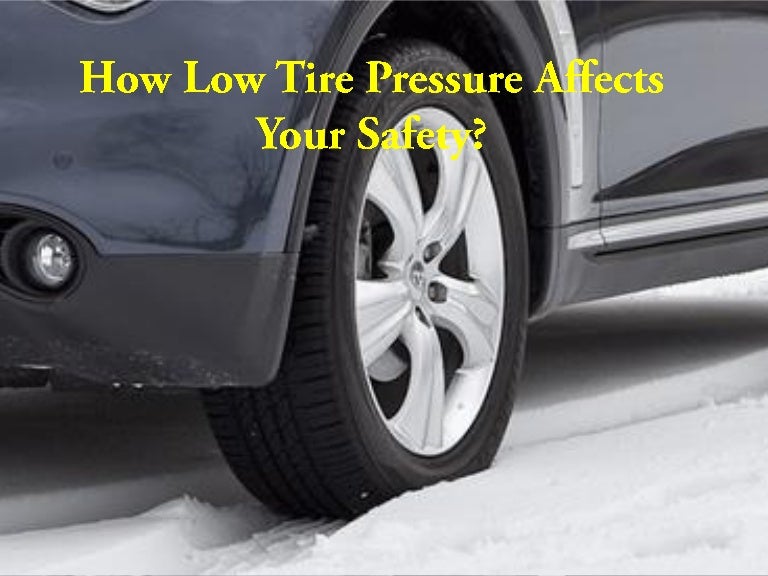
Tire manufacturers often list a mileage expectancy for their products. These are helpful guides when shopping, but remember that driving style, traffic conditions, weather, and proper pressurization can have huge impacts on a tire’s lifespan.
A. Tires are constantly plastered with dirt, brake dust, oil, and other on-road contaminants. More than that, they commonly suffer from something called “blooming,” which occurs when anti-oxidizing compounds inside the tire are drawn to the surface and leave a brownish residue. To keep your low-profile tires looking fresh and clean, institute a regular cleaning routine.
Start by rinsing the tires. Then, wash them with dish soap diluted in water, one teaspoon for every gallon. Use a sponge to remove dirt and blooming from your tires, but remember to use something softer to clean the wheels. Rinse and dry the tires. Now, you’re ready to apply a dressing to restore the clean black look of new tires. Repeat this regimen every time you wash your vehicle to keep it looking like new from head to toe.
Now, you’re ready to apply a dressing to restore the clean black look of new tires. Repeat this regimen every time you wash your vehicle to keep it looking like new from head to toe.
A. Rotating your tires entails moving your rear tires to the front and vice versa to promote even tire wear. Remember, the wheels that drive the car (i.e. the front wheels on a front-wheel-drive car) wear more quickly due to them transferring the engine’s power to the pavement and handling the bulk of the weight.
The frequency with which you rotate your tires depends on your driving style and local road conditions, but as always, there’s a helpful rule of thumb to follow: rotate your tires when you change your oil. If you drive fewer than 7,500 miles a year, though, it’s recommended to rotate your tires every six months or so. Always check your owner’s manual for reference, as some cars and trucks have different tire rotation schedules.
A. Run-flat tires allow cars to continue driving after a puncture. They also remove the need for a spare, freeing up valuable space in the trunk. Sure, they’re generally only good for about 50 miles of driving at 55 mph or so, but the ability to get to a service station without pulling over to swap tires is worth its weight in gold.
There are two types of run-flats: self-supporting variants with strong sidewalls to support the weight of the car when the air leaks out, and self-sealing versions that have liquid inside to temporarily patch punctures. Not every type is suitable for every wheel, and they’re almost always more expensive than regular tires. Whether you purchase run-flats or not depends on how much you value convenience. A tire patch kit and air pump are considerably less expensive than the run-flat upcharge, but they require some elbow grease.
Konstantin Ishchenko
experienced car enthusiast
The motorist's budget hits the hardest when you have to buy both summer and winter sets of tires within one year.
For example, the popular Nissan Qashqai is equipped with 225/45 R19 tires in the maximum configuration, a set of the middle price category will cost about 50,000 rubles.
But there is an option to save money and buy used tires. This article will tell you how to safely buy used tires and when you shouldn't.
Or the season has changed. We wrote in detail about how to assess the condition of tires and understand when they need to be changed in a separate instruction. Before you start looking for tires, it is important to be able to read their parameters.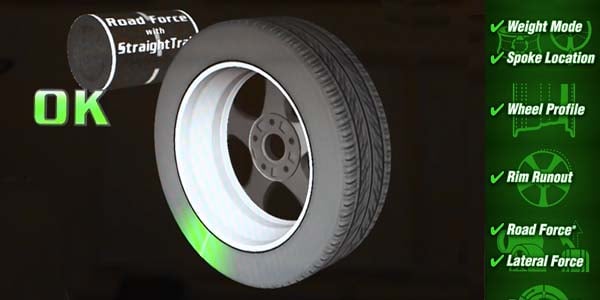 The most important in this situation are the size, manufacturer and model of the tire.
The most important in this situation are the size, manufacturer and model of the tire.
If the task is to buy a set of four tires, then it is important to respect the size. If you damaged one tire, you will have to look for exactly the same one: two wheels of the same axle must have tires with the same tread pattern, and this is possible only in the case of tires of the same model.
/save/koleso-hack/
How to save money on buying car tires and wheels?
Tire parameters important to look for: width, profile height and rim diameter Tire manufacturer and modelAccording to Avtostat, an average car in Russia drives 17,500 km per year. Let's take the average wear resistance of tires according to the Treadwear index - 320 and calculate how long a new set of summer tires could theoretically last.
Every 100 index units is 12,500 km, which means tires are rated for 40,000 km. Assuming that the summer kit is used for 6 months out of 12, the mileage for six months is 8750 km, and the kit is enough for 4. 5 seasons.
5 seasons.
If the annual mileage is 30,000 km, then the summer kit should wear out in 2.7 seasons. But I have not met people who change tires in the middle of the season: either they change them in the spring, or they drive them until autumn.
Judging by Yandex Market, the average popular tire 205/55 R16 costs 5500 R, which means that the set is 22 000 R. Let's round up 2.7 to three full seasons. One season costs Rs. pay more than 14,000 R. How to evaluate the tread depth on a used tire, we will tell a little later.
/top-economic-cars/
11 economical cars for daily driving
These are very average values, but still usable. There is no perfect formula, operating conditions and driving style are very different.
Buying used tires will allow you not to get into a loan if a new set is too expensive. Or it will help those who know for sure that at the end of the season they will change the car: there is no point in buying new tires for the next driver.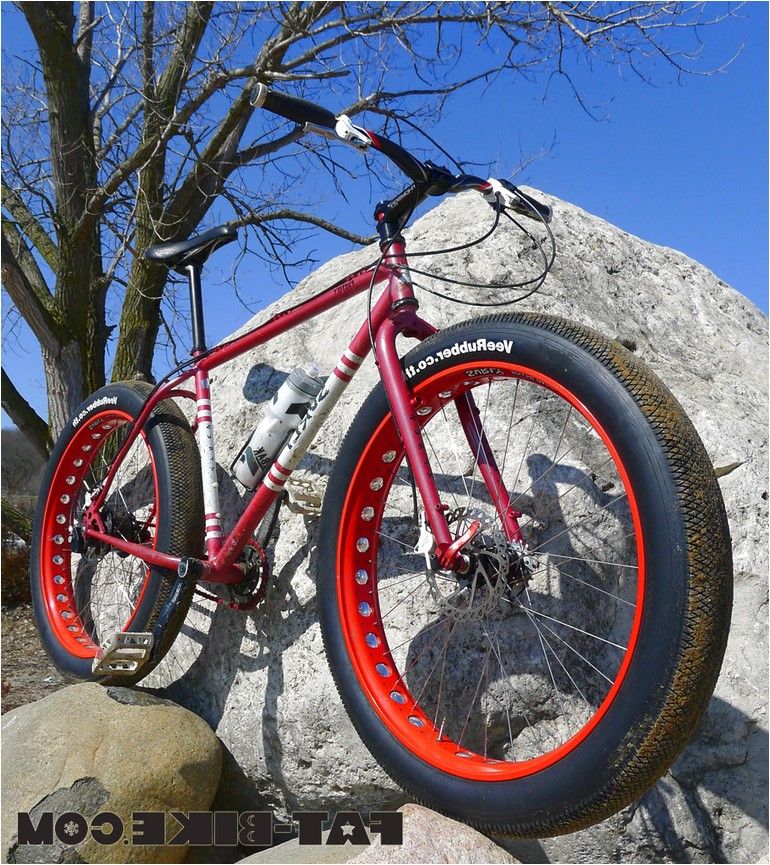 However, the theoretical calculation does not take into account your travel time for the next purchase and the risks of buying a bad kit. If you plan to drive a car for at least two years, buy new tires.
However, the theoretical calculation does not take into account your travel time for the next purchase and the risks of buying a bad kit. If you plan to drive a car for at least two years, buy new tires.
At first glance, selling tires is illogical. Tires need to be worn out completely and then disposed of, but the market for used rubber is huge. It has several types of sellers with very different offers.
Companies that sell used tires from Europe and Japan. Despite the ban on the import of used rubber, which has been in effect in the Eurasian Customs Union since January 1, 2010, this business is booming.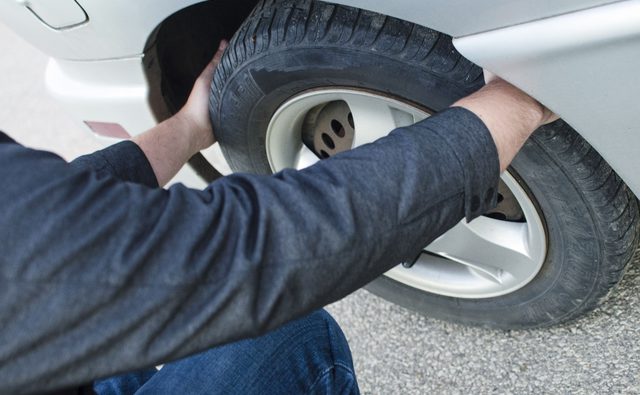 The main thing is to prove that tires are not hazardous waste and they are not imported for recycling. Therefore, on Avito and various sites, many offices offer used tires of various brands, sizes and models.
The main thing is to prove that tires are not hazardous waste and they are not imported for recycling. Therefore, on Avito and various sites, many offices offer used tires of various brands, sizes and models.
| Benefits | Defects |
|---|---|
| Huge selection of summer tires Advice available, professionals know their product Usually there is a tire service on site Safer online shopping. Many sell by bank transfer as a full-fledged online store Tire warranty until the first tire fitting, a defective tire will be changed to a good one or money will be returned | There is almost no choice of winter tires: no studded and little friction - Velcro. You can only buy "euro-winter" for mild climatic conditions. Consultation will not always be truthful and in the interests of the buyer. Everything is like on the market in the bad sense of the word Tires can be of the old year of manufacture |
Here are some of the advantages of specialized stores that sell used tires:

But there are also disadvantages:
Dealers and tire shops. They differ from the first ones in scale - they are much smaller, and also in that they trade at best on the scale of one city.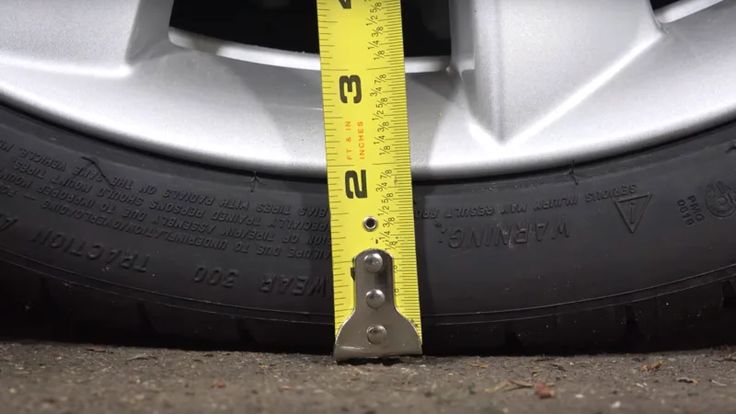 Often the base for such activities is a tire shop. They buy cheaply at Avito or from tire fitting clients, sell more expensively at Avito or other tire fitting clients.
Often the base for such activities is a tire shop. They buy cheaply at Avito or from tire fitting clients, sell more expensively at Avito or other tire fitting clients.
There are also not very pleasant scenarios: an unscrupulous tire fitting worker offers to dispose of a completely normal set of tires “out of friendship” and gets it for free. For another client, the same kit “very much nothing, two seasons will definitely pass” costs 15,000 rubles.
/save/garage-hack/
A typical tire shop that sells rubber for emergency replacement of a damaged tire. The choice is small, storage is not according to the rules: direct sunlight damages tires. But there are situations when there is no choice
Individuals who sell unwanted tires for a variety of reasons. Here are the main ones:
 This makes sense: a car will definitely not become more expensive due to a set of wheels;
This makes sense: a car will definitely not become more expensive due to a set of wheels; | Advantages of | Defects |
|---|---|
| You can search for tires by car make and model, not just size With a little luck, you can make a super bargain | It will take a long time and carefully to choose among ads Many do not know what they are selling (mistakes in tire names, sizes and models are normal) A rare seller agrees to tire fitting in his presence, everything will have to be checked by himself and by hand Many scammers: they can offer to leave an advance payment and disappear or send an erased kit instead of what is in the ad No warranty on tires |
Here are some of the benefits of buying used tires from individuals:
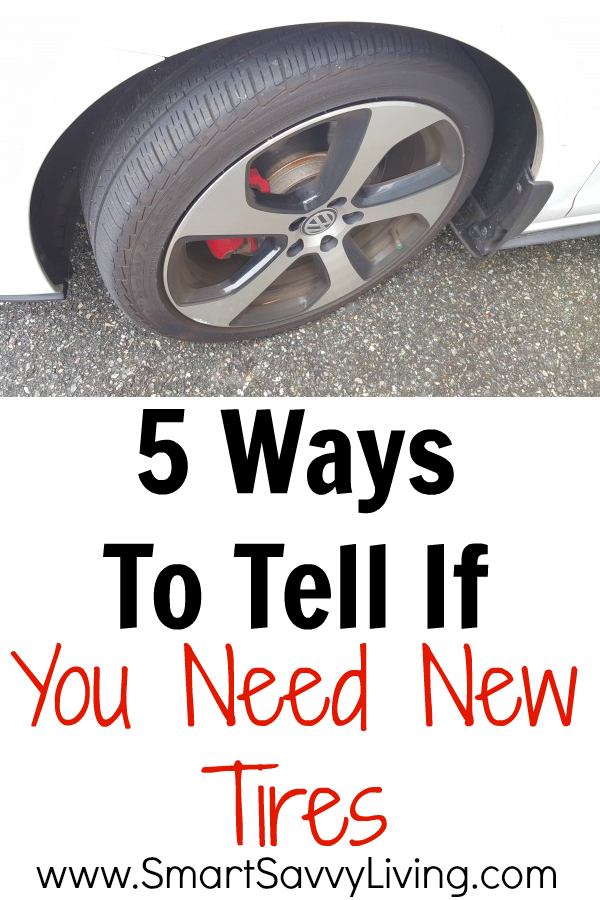
But there are also disadvantages:
Universal ad platforms: Avito, Yula and others. Here is the largest selection of used tires. Both private traders and professionals sell. Despite the convenient application and filters, it takes a lot of time to search. Don't expect every seller to list the model correctly. Bridgestone Potenza can become just "Bridge Stone" - and this is not the worst option.
Here is the largest selection of used tires. Both private traders and professionals sell. Despite the convenient application and filters, it takes a lot of time to search. Don't expect every seller to list the model correctly. Bridgestone Potenza can become just "Bridge Stone" - and this is not the worst option.
You will have to scroll through a huge number of ads with completely worn-out tires that are only suitable for recycling. Unfortunately, no filters will save you from this. Looking for tires on Avito is like looking for a treasure: you have to dig a lot, and no one guarantees a reward, but some are lucky.
/avito-fraud/
Avito: how to avoid scammers
Adjust the filter by size - so you will have more chances to find the tires you need You can no longer drive on such tires: they are worn out to the limit marks, this can be seen even in the photo. Plus, the sidewalls are very worn out. But the seller still thinks that he can get 3000 R for them Websites for car sales announcements: "Avto-ru" and "Drom". There are few private ads here, mainly specialized stores operate on such sites.
There are few private ads here, mainly specialized stores operate on such sites.
Droma has the largest selection of used wheels and tires from Japan in the country. Drome offers a good customer protection service and acts as a guarantor of purchase: if they send you worn or damaged tires, the site will return the money. If everything is fine, they will be transferred to the seller.
At the time of writing the article on Avto-ru, there were only five private ads for the sale of tires of the common size 205/50 R17 throughout Russia. It makes no sense to look for tires from private traders on this site. Source: Avto-ruCar club sites: forums, chats, Drive-2 — places where representatives of car clubs communicate. Sometimes it can be difficult to find the site itself. This can be a group on Vkontakte, a chat on Telegram or WhatsApp.
There are fewer offers here, but they are more interesting, more likely to find a good set. It is not customary to post completely junk for sale in communities or to greatly inflate the price: the ad will be discussed, criticized, or even deleted altogether.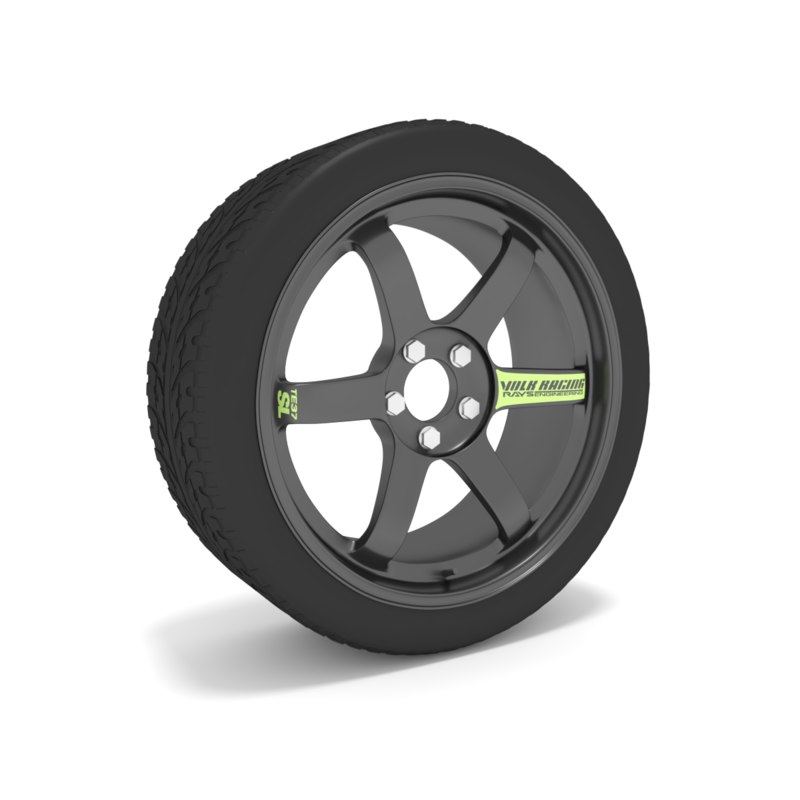
But don't forget about safety. You should not buy something without verification or send the entire amount to a stranger in another city. It is usually customary to ask a friend of a teammate to go look at the kit and make sure that the tires are sent. Here, as a rule, you can place your ad on the purchase of the necessary tires and wait for responses.
There is a flea market on Drive-2. It is not very popular, but it is worth looking into it: there are filters separately for disks, wheels and tires, you can specify the dimensions.
/carservice/
How to save money on the operation of the car
Special online stores and car disassembly. In most cases, such sellers open an official representative office on Avito, but some sites are still working. They may have rare tires or a more interesting price. Large auto-dismantlers rarely sell tires - they mainly sell sets of wheels. The condition of the tires on the rims is most often mediocre: a car is not sent to scrap on good tires.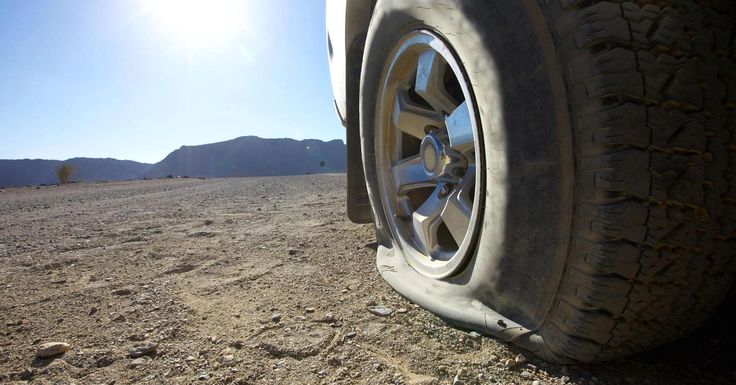
Tire shops and car services. It's hard to find interesting deals on tires here, it's not their business. Tires in a tire shop are usually bought in emergency cases: when one or more tires are damaged, but you need to somehow drive a couple of weeks to pay.
Price. Before buying used tires, it is better to check the price of new tires of the right size. Tires from young Chinese brands are very cheap, and the market for used tires is overheated and overpriced. It is impossible to unequivocally answer which is better: a new tire from an unknown manufacturer or a used tire from a well-known brand. But it is necessary to compare, study reviews and weigh everything.
At first glance, an excellent offer. A set of fresh tires 215/55 R17 with 20% wear for 18,000 R. But the indicated balance of 6 mm is about 30% wear. The remaining tread of the new tire is 8 mm, the tread limiter bar has a height of 1.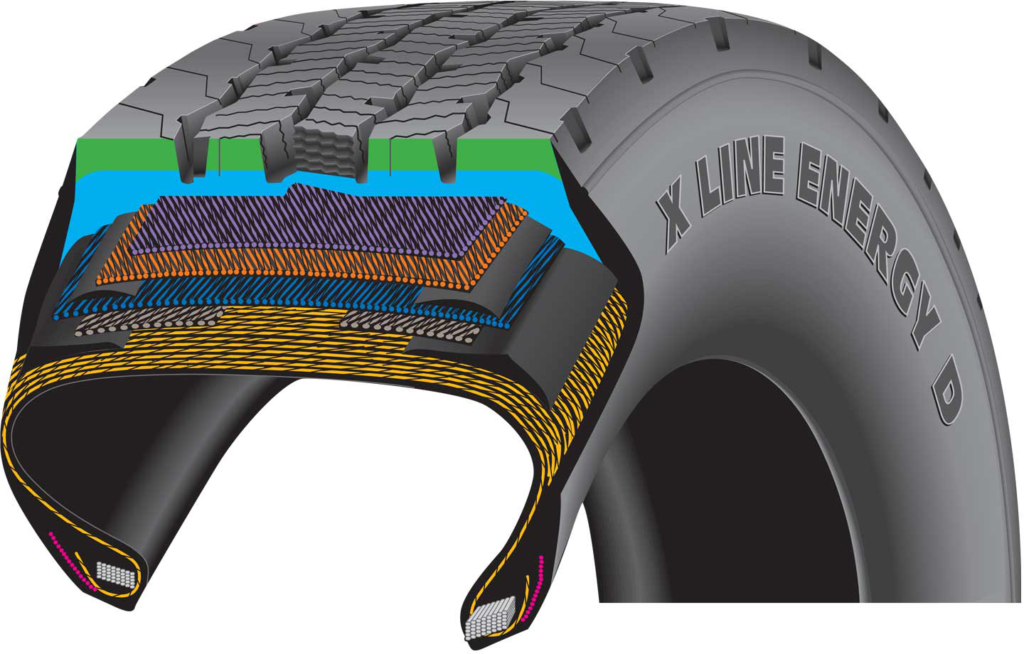 6 mm. The tire is worn 2 mm. Usable tread depth: 8 mm − 1.6 mm = 6.4 mm. 2mm from 6.4mm is 31% wear. Source: Avito But then it turns out that the new ones are very inexpensive. The remaining 6 mm is two-thirds of the tire resource, which means that buying such a kit costs no more than 16,000 R. Source: Yandex Market
6 mm. The tire is worn 2 mm. Usable tread depth: 8 mm − 1.6 mm = 6.4 mm. 2mm from 6.4mm is 31% wear. Source: Avito But then it turns out that the new ones are very inexpensive. The remaining 6 mm is two-thirds of the tire resource, which means that buying such a kit costs no more than 16,000 R. Source: Yandex Market Manufacturer, model, size, indices and other features. Be sure to check all tire specifications - everything that is indicated on the sidewall. The seller may not understand tires well or deliberately lie. Carefully inspect each tire. For example, you can accidentally buy a set of four tires, where three will be with runflat technology and one without it. If buying tires remotely, always ask for individual photos of each tire in full detail, or even better, a video.
Tire year. Among the advertisements of specialized stores, there are often tires that are more than 5 years old. Tires may have excellent tread residue, but it is better to refrain from such a purchase. The older the tire, the worse its properties and the greater the chance of hidden damage: cracks, delaminations and ruptures.
The older the tire, the worse its properties and the greater the chance of hidden damage: cracks, delaminations and ruptures.
/wtf/bezkoles/
How online tire stores deceive car owners
The tire release marking always looks like this: the first two digits are the week of production, the second two are the yearTread depth. It is not necessary to measure the residual depth "by eye", it is better to buy a special device or use a caliper. The standard tread depth of new summer car tires is 7-8 mm, winter tires are 8-10 mm.
About tires that are long overdue for disposal, they wrote above: summer tires less than 4 mm or winter tires less than 5 mm should not be bought "for the season", it is not safe.
Digital Tread Depth Gauge is a simple and cheap instrument. It will help to accurately measure the residual tread depth and adjust the price of a set of tires. Source: Yandex Market Tread condition, damage and repairs. Do not buy tires with uneven tread wear. They will not be able to provide a complete drainage of water from the contact patch with the road, it is unsafe to ride on them. Severe cuts or even the absence of individual tread fragments will also be a reason to refuse a purchase. Without a specialist, you run the risk of buying a tire that you cannot use.
Do not buy tires with uneven tread wear. They will not be able to provide a complete drainage of water from the contact patch with the road, it is unsafe to ride on them. Severe cuts or even the absence of individual tread fragments will also be a reason to refuse a purchase. Without a specialist, you run the risk of buying a tire that you cannot use.
But do not be afraid of well-repaired punctures. Tires with patches on the inside of the tread part can be bought, this will not affect further operation. You should not buy tires on which punctures were repaired with a tourniquet.
/mini-jcw/
How much does it cost to own a Mini John Cooper Works
Obviously, this tire is no good: there is almost no tread, the studs are completely worn out. The central part is almost completely missing, and the sidewalls are less worn. Maybe the tire was pumped. Surprisingly, they also sell such Cracks and delaminations. Long longitudinal cracks, along the circumference of the tire on the sidewall or small cracks in the tread area - in any case, bad.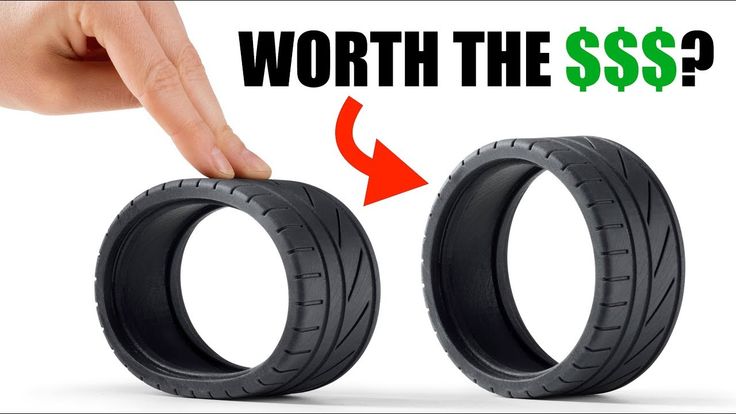 Either such a tire was poorly stored, or it is very old. This is a particularly dangerous case, because such a tire can collapse while driving and cause a terrible accident. Cracks are not repaired, so you will have to refrain from buying.
Either such a tire was poorly stored, or it is very old. This is a particularly dangerous case, because such a tire can collapse while driving and cause a terrible accident. Cracks are not repaired, so you will have to refrain from buying.
Sidewall condition, damage and repairs. Hernias of any size, side cuts and patches on the side of the tire are good reasons to keep looking. You can't buy these tires.
Carefully inspect and feel the sidewalls of the tires. Unfortunately, not all defects can be found on a tire without a disk and without air inside. It will be ideal if you can mount tires on rims in a tire shop. Ask to balance the wheels and only then pay.
/guide/rezina/
How to choose tires for a car or crossover
If in doubt that the tires are intact, look for another option. Remember that it is the tires that connect your car and the road.
The surface adjacent to the rim may also be damaged on the tire. The photo shows the consequences of careless tire fitting of an old tire. I don't recommend buying this tire. If in doubt, and the offer is very interesting, ask the opinion of a tire fitting specialist
The photo shows the consequences of careless tire fitting of an old tire. I don't recommend buying this tire. If in doubt, and the offer is very interesting, ask the opinion of a tire fitting specialist Presence of spikes and their condition. It is not necessary to count every stud on a tire, it is difficult and time consuming. Just look at the tire: if it seems that there are about half of the studs on it or less, you do not need to buy a tire. Studded tires without studs won't get Velcro, so don't just look at the tread.
Studs on a tire that has already been driven for a couple of seasons look very different from new ones. They were worn off along the way, the seats were broken. In the background, you can see that the tire has already begun to lose studs. Even with sufficient tread, you can be left without spikes very quickly, it is better to look for another option Ads often offer used tires at an inflated price. We have made a special calculator that will help you calculate the fair value of tires, regardless of the manufacturer, technical parameters of tires and their number in the kit.
We have made a special calculator that will help you calculate the fair value of tires, regardless of the manufacturer, technical parameters of tires and their number in the kit.
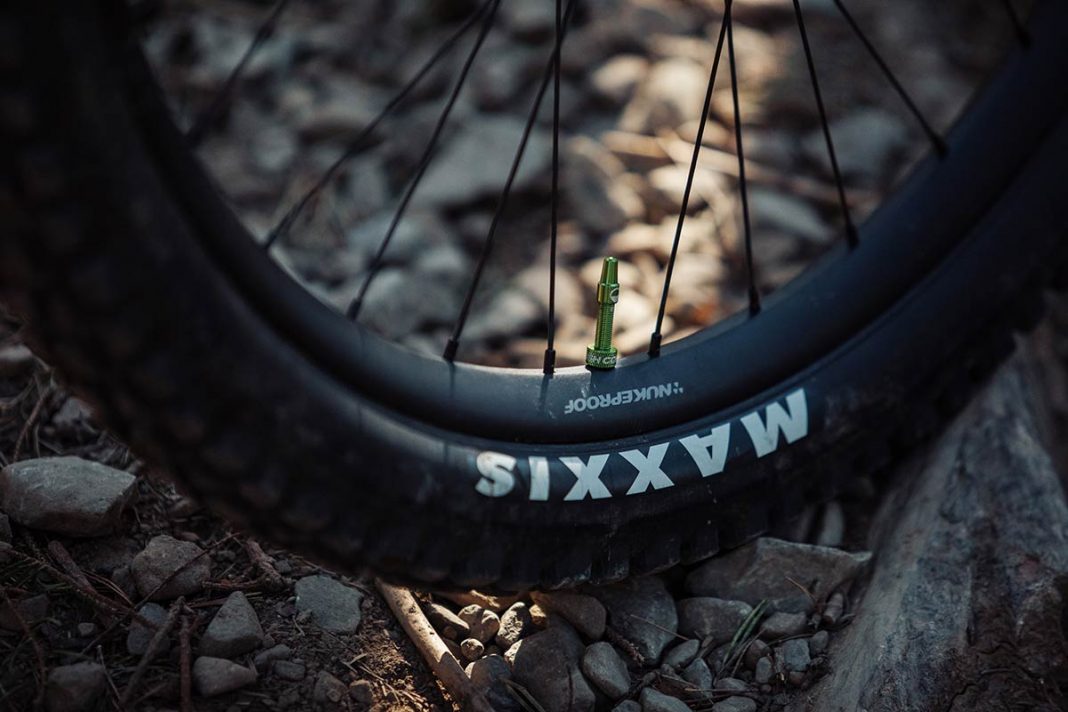
On November 1, 2020, the mandatory marking of wheel tires and car tires began. We tell you how to work further, what equipment needs to be prepared, what to do with the leftovers, and how much violations cost.
No time to sort things out? Let's help!
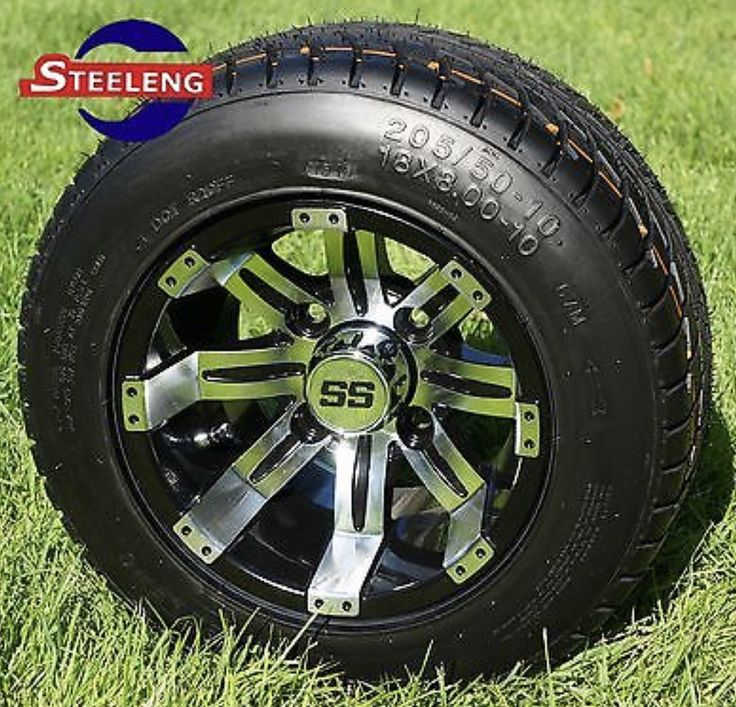
New pneumatic tires and tyres:
Specific OKPD 2 and TN VED EAEU codes are shown in the table.
| Product | OKPD 2 | FEE EAEU | ||
|---|---|---|---|---|
| Tires and cars for cars new | 22.11.11 | 10 000 3 4011 10 000 | ||
| wheelchairs, scooters, mopeds and quad bikes | 11/22/12. 110 110 | 4011 4011 40 000 0 | ||
| tires and pneumatic tires for buses, trolley and trucks new | 11/22/13.110 | 4011 20 900 0 900 for agricultural machines; tires and other pneumatic tires new | 22.11.14 | 4011 70 000 0 4011 80 000 0 |
| Solid or semi-pneumatic rubber tires | 22.11.15.120 | 4011 90 000 0 |
1.
Register in the marking system.
2.
Learn how to label products (for production and import): connect to labeling, purchase label printing equipment.
3.
Learn to accept marked tires: connect to EDI and marking, purchase equipment for brand scanning.
4.
Learn how to sell branded tires:
Turnkey marking
Your browser is outdated, there may be problems working with the site
Your browser does not contain the latest updates necessary for the correct operation of the portal.